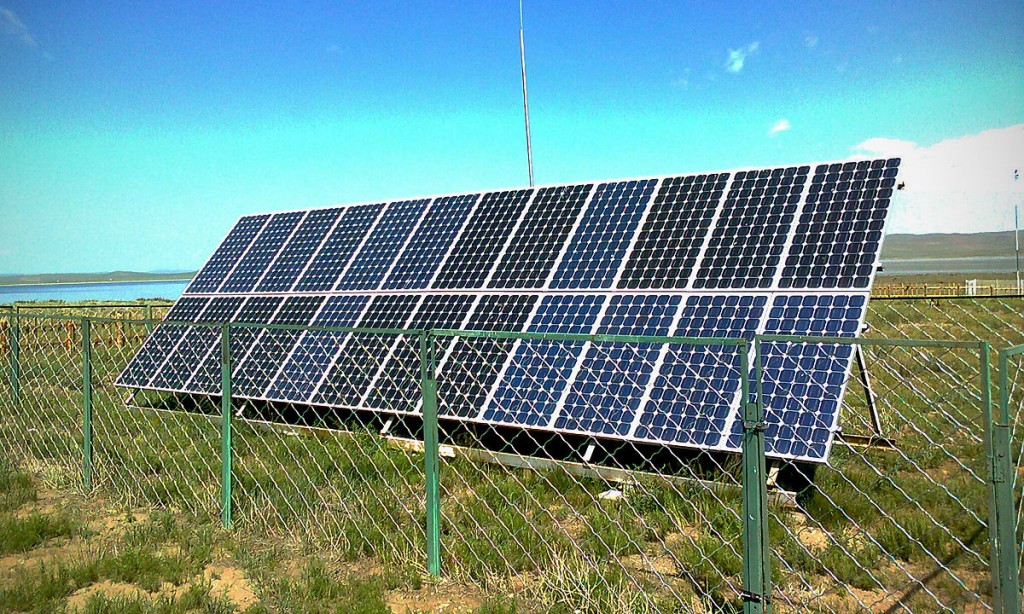Breaking
What solar and wind energy can do to affect power market trading

A solar array composed of a solar panel with 24 solar modules. Photo by Chinneeb / Wikimedia Commons.
MANILA — How could using wind and solar energy investments affect trading in the power market?
Despite its unpredictable characteristic, wind and solar energy could have affected power rates in a very broad manner – through the electricity market.
According to a report from the International Energy Agency (IEA), the rapid introduction of Variable Renewable Energy (VRE) – depending on the availability of wind and sunshine – into a stable power system tends to create a surplus of generation capacity.
The IEA stressed the oversupply will tend to depress wholesale market prices, which will result in lower prices that will eventually trigger the retirement of generation capacity.
The scenario was formerly observed in the European Union, namely in Spain, Italy and Germany.
In the Philippines, the local electricity market operator, Philippine Electricity Market Corporation (PEMC), which monitors the trading at the Wholesale Electricity Spot Market (WESM) explains the effect of increased wind capacities to summer’s electricity prices — is still too few to be assessed.
”It’s premature to conclude, considering the (current) low capacity of wind,” PEMC Training and Communications Manager Atty. Phillip C. Adviento told PNA in a text message.
He confirmed the availability of the power sources (sunshine and wind) will also be a factor to the pricing impact.
Wind energy has become attractive with the implementation of the Feed-in-Tariff (FIT) allowance, with Ayala Corporation and Energy Development Corporation (EDC) venturing into wind power investments.
A PEMC document noted Luzon and Visayas capacities registered at the WESM, amount to 231 megawatts (MWs) for wind capacity from two companies and 53-MW for solar capacity also from two companies.
For the 2015 power generation mix, wind makes up 2.44 percent of Luzon and Visayas’s power generation, while solar makes a mere 0.33 percent.
WESM operator, PEMC showed the progression of RE capacities was fast at an increase of 75.9-MW from 2014 until 2015.
Under the recent implementation of the FIT, RE capacities from wind, solar, run of river hydro and ocean will be prioritized for power dispatch than more expensive sources such as oil-based power plants.
”The enjoyment of “Must Dispatch” by intermittent RE-based plants is based on the difficulty to precisely predict the availability of RE resource thereby making the energy generated variable, unpredictable and irregular and the availability of resource inherently uncontrollable,” PEMC said in the document.
The FIT bids RE capacities at zero due to its different payment scheme with the FIT allowance, which is paid by customers at Php .04 per kilowatthour (kWh) through the new billing component from the Manila Electric Company (Meralco).
RE capacities that have not been applied for FIT will settle their transactions at the market clearing price, according to PEMC.
On the matter raised by the IEA regarding the retirement of other generation plants, Department of Energy (DOE) Undersecretary Zenaida Monsada told PNA the DOE does not fear that conventional and expensive power sources such as oil-based power plants will not be completely displaced.
She added the DOE has published an energy mix guide to have a good balance between RE and conventional resources, avoiding the past problems in Europe which resulted in RE oversupply and the closure of power plants.
”That’s what a guide on energy mix is for – a good balance,” the DOE Undersecretary said.
Monsada also confirmed the DOE is implementing the FIT in phases to ensure there will be no RE oversupply.
Thus, with the VRE integration and DOE energy mix guide, the country’s future electricity supply may prove to be more stable than other countries.
But, its effect to market prices is still yet to be seen, as more VRE investments eventually come in.





















